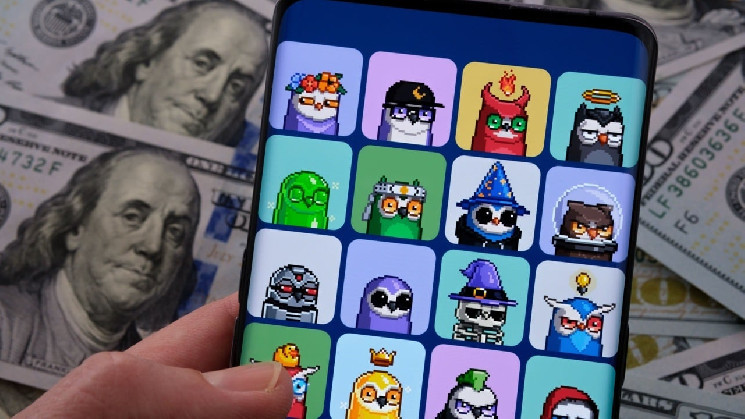The non-fungible tokens (NFT) market saw its worst performance in four years in 2024, with trading volumes and sales falling 19% and 18% respectively.
2024 NFT trading volumes fell to a quarter of 2022 levels
The non-fungible tokens (NFT) market saw its worst performance in four years in 2024, with trading volumes and sales falling 19% and 18% respectively. Data from Dappradar shows that while the NFT trading volume of $13.7 billion in 2024 is smaller than the $74 million recorded in 2020, it is four times less than the $57.2 billion recorded in 2022 registered.
Interest in NFTs has gradually declined since peaking in 2022. Many collections that sold for record prices have fallen to an all-time low. A recent Bitcoin.com News report stated that many NFTs minted in 2024 did not have matching demand. Additionally, an NFT Evening study suggests that the decline in value of newly minted collections indicates oversaturation.
This research found that a large majority (98%) of 2024 NFTs had not seen any trading activity since September 2024, indicating oversaturation. These findings are seemingly confirmed by Dappradar’s report, which points to a short-lived increase.
“At the start of the year, trading volumes increased to approximately $5.3 billion in the first quarter, an increase of 4% compared to the first quarter of 2023,” the Dappradar report explains. “However, this momentum was short-lived as volumes fell to $1.5 billion in the third quarter before recovering to $2.6 billion in the fourth quarter.”
Of the top five NFT collections, only Pudgy Penguins (141%) saw their annual volume grow. The remaining top five collections, namely Bored Ape Yacht Club, Mutant Ape Yacht Club, Azuki and Crypto Punks, all saw their respective volumes decline by 51%, 57%, 46% and 42% respectively.
NFT platforms are urged to integrate interactive incentives
Meanwhile, a panel of experts interviewed by Bitcoin.com News believes NFT issuers will have to get more creative to reverse months of declining trading volumes. Alex Casassovici, founder of Azarus, says NFT platforms can reignite user interest by integrating interactive incentives and fostering a sense of community ownership.
Casassovici points to Blur, which dethroned Opensea as the number one NFT platform by using gamified engagement to drive user adoption and retention. He emphasizes the need for both gamification and incentives to transform platforms into “ecosystems where users feel valued and invested in the success of the community.”
Paul Thomas, CEO and founder of Somnia, said he is in favor of incorporating more social elements into NFT platforms. He argues that this is especially important “because NFTs are more about utility and less about speculation.” Sander Görtjes, co-founder and CEO of Hello Labs, suggests “defragmentation” of goods, or tokenized assets, as a strategy for NFT platforms to “reengage the audiences that have been lost in recent years.”
Hong Yea, co-founder and CEO of GRVT, urges NFT platforms to consider cross-industry collaborations to reach broader audiences and bridge cultural gaps. However, Yea, who also makes three additional recommendations, acknowledges that the success of these strategies depends on key factors.
“Ultimately, sustainable adoption depends on creating tangible value for users, forging connections between NFTs and culture, and embracing innovations that meet the changing needs of the community,” said Yea.

